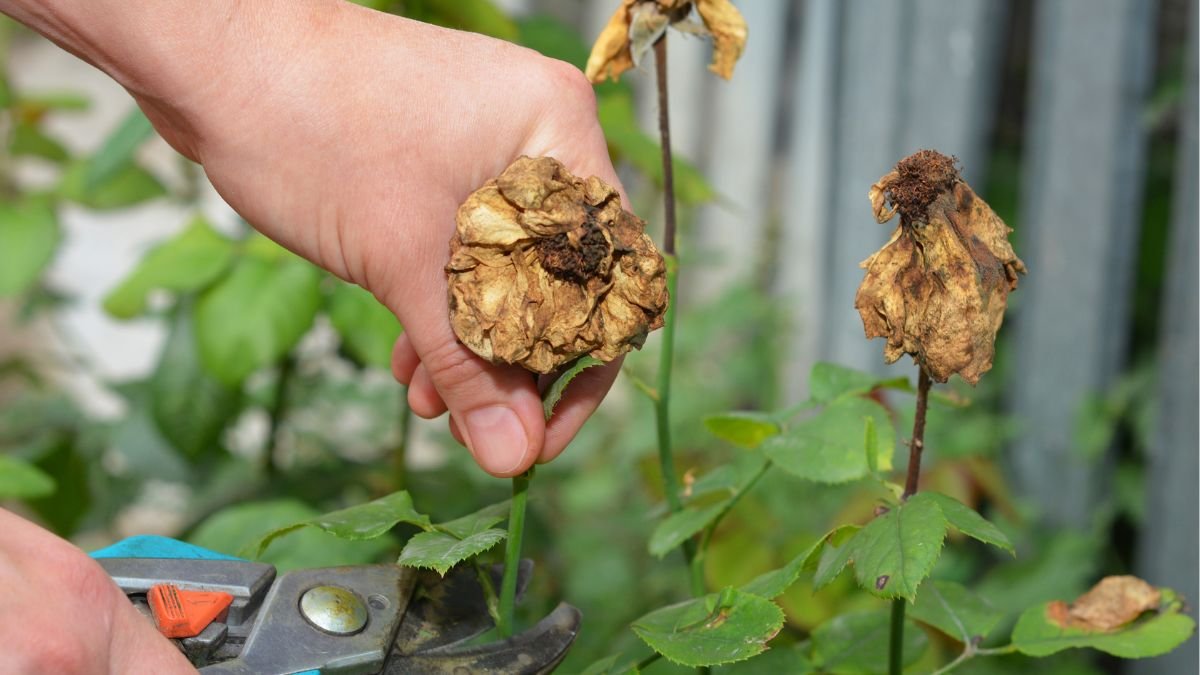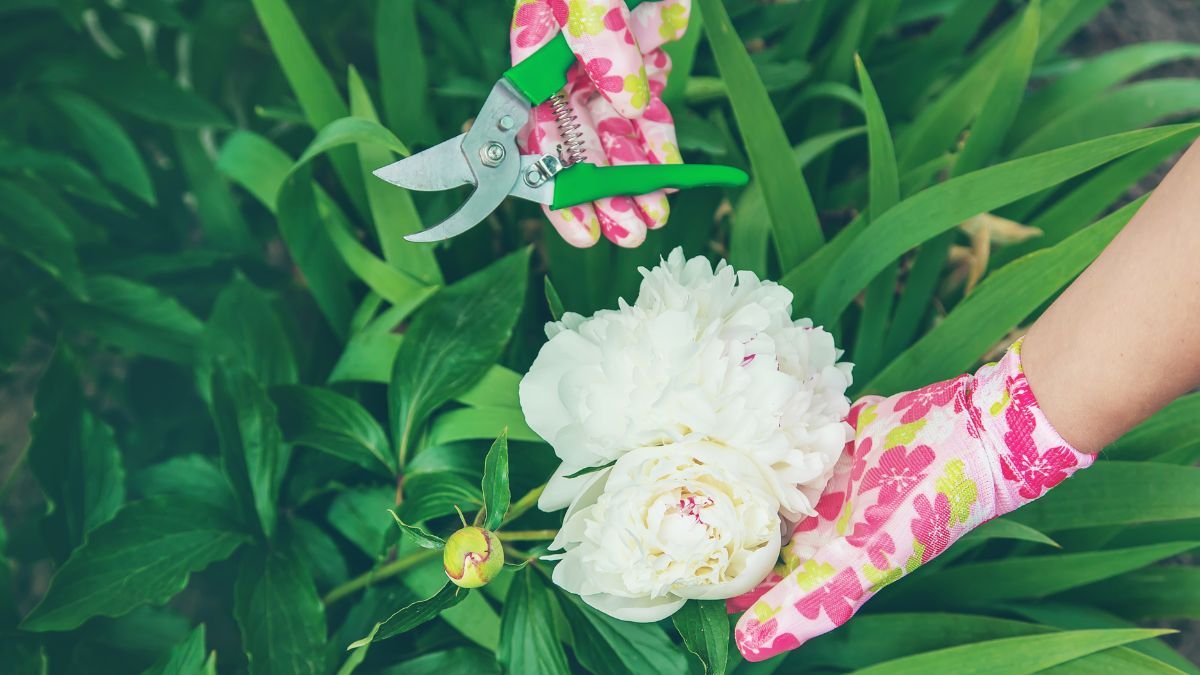Are your peonies not blooming like they should? You’ve given them sun, water, and patience, yet something’s still off. The culprit might be hiding in plain sight: pruning mistakes you didn’t even know you were making.
Most gardeners trim their peonies on autopilot, snipping away without realizing that minor missteps lead to fewer flowers, weaker plants, or disease. Over-pruning at the wrong time, cutting too close to the crown, or using dirty tools can silently sabotage years of growth.
By spotting these easily missed errors, you can transform struggling peonies into thriving, bloom-heavy showstoppers. Whether you’re an expert grower or a first-time peony parent, this guide reveals the 15 most overlooked mistakes when pruning peonies and exactly how to avoid them.
Stop guessing why your peonies underperform. Let’s uncover what’s holding them back and get those lush, vibrant blooms you’ve been waiting for.
15 Overlooked Mistakes When Pruning Peonies (And How to Avoid Them)

1. Pruning at the Wrong Time of Day

Peonies are sturdy, but timing matters more than many gardeners realize. Snipping stems under the harsh midday sun can cause unnecessary stress. The plant loses moisture rapidly through fresh cuts, leaving it weak to wilting. Early morning or late afternoon, when temperatures are cooler, allows clean healing without added strain.
Sun exposure isn’t the only concern. Heat speeds up sap flow, making cuts “bleed” more than necessary. This weakens the plant over time. Cloudy days or cooler hours give peonies a chance to recover naturally.
Some believe any time works as long as pruning happens in the right season. But just like watering at noon can scorch leaves, cutting under intense sun does silent damage. Waiting for softer light keeps the peonies strong and reduces shock.
2. Ignoring the “Three-Year Rule” for New Plants

Young peonies need patience. Pruning them laboriously in the first three years limits their ability to establish strong roots and foliage. Energy that should go toward growth gets wasted on recovering from cuts.
Mature plants bounce back from pruning, but new ones struggle. Removing too many stems early forces them to shift resources to healing instead of developing. This delays flowering and can lead to weaker plants in the long term.
A study from horticultural experts found that peonies pruned minimally in their first three seasons produced more blooms by year four. Letting them grow freely builds resilience. Only remove dead or damaged wood during this period.
3. Using Dull or Unsterilized Tools

Clean, sharp tools count more than most gardeners think. Ragged cuts from dull blades tear stems instead of slicing cleanly. These rough edges take longer to heal, inviting pests and disease.
Sterilization is just as essential. Wiping shears with rubbing alcohol between cuts prevents spreading fungi or bacteria. Something as simple as botrytis can travel from an infected stem to healthy ones in seconds.
Peonies are particularly prone to fungal issues when wounded. A quick pass of a disinfectant wipe protects them. Sharp tools also reduce stress on the plant, helping it recover faster.
4. Removing Too Many Leaves Early

Leaves aren’t just decoration, they’re the plant’s energy source. Cutting too many before inactivity weakens peonies right when they need strength for winter. Photosynthesis slows if foliage is stripped too soon.
Some gardeners prune aggressively after blooming, thinking it cleans the plant. But those leaves keep working, storing nutrients for next year. Removing more than a third at once shocks the system.
Peonies rely on this energy reserve to survive cold months. A balanced approach keeps them thriving. Only trim damaged or diseased leaves until late fall.
5. Cutting Stems Too Close to the Crown

The crown is the heart of the peony. Slicing stems flush with it opens the door to rot and infection. Leaving a small buffer of about an inch protects this powerless area.
Moisture collects in flat cuts near the base, encouraging fungal growth. Angled cuts farther up allow water to run off, reducing risk. Peonies store energy in their crowns, so damaging them affects future blooms.
A common mistake is treating peonies like shrubs that can handle close cuts. Their structure is different. Gentle pruning keeps the crown safe and assures years of healthy growth.
6. Leaving Stubs That Are Too Long

Those leftover stem stubs aren’t just unattractive, they’re an open invitation for trouble. When cuts are made too far from the main stem, the dying tissue becomes a magnet for moisture, fungi, and burrowing insects. What starts as a minor pruning slip can turn into a full-blown infestation.
Peonies heal best when cuts are made close (but not too close) to a growth node or main stem. Long stubs can’t callus over properly, leaving raw plant tissue exposed. This is especially problematic in humid climates where fungal spores linger in the air. A clean cut at the right length helps the wound dry and seal faster.
Some gardeners leave stubs thinking they’ll protect the plant. In reality, they do the opposite. A sharp pair of bypass pruners and a steady hand prevent this issue. Trim just enough to avoid damaging the main stem but not so much that a stub remains.
7. Pruning Herbaceous vs. Tree Peonies the Same Way

Not all peonies grow the same way, yet many gardeners treat them as if they do. Herbaceous peonies die back to the ground each winter, while tree peonies maintain woody stems year-round. This basic difference changes how they should be pruned.
Tree peonies need a lighter touch; only dead or weak wood should be removed in early spring. Cutting them back hard, like herbaceous types, can ruin their structure and delay flowering for years. Herbaceous peonies, on the other hand, benefit from a full cutback in fall after frost.
Mixing up the two leads to stunted growth or lost blooms. Knowing which type is in the garden makes all the difference. A quick check of the stems (woody vs. soft) before pruning prevents costly mistakes.
8. Disposing of Pruned Debris Near the Plant

It’s tempting to drop clipped stems and leaves right at the base of the plant because it’s organic matter, right? Unfortunately, this habit can backfire. Dead plant material left near peonies becomes a breeding ground for pests and diseases.
Fungal spores and insect eggs often linger on discarded foliage. When left too close, they easily spread back to healthy parts of the plant. Even seemingly clean trimmings can harbor hidden problems. The safest approach is to bag and remove debris or burn it if local regulations allow.
Composting is an option, but only if the pile reaches high enough temperatures to kill pathogens. Otherwise, those clipped leaves might reintroduce issues later. Keeping the area clean reduces future headaches.
9. Overlooking the Importance of “Deadheading vs. Pruning”

Removing spent blooms isn’t the same as pruning, yet many gardeners lump them together. Deadheading i.e snipping off faded flowers encourages the plant to focus energy on roots rather than seed production. Pruning, however, involves cutting stems and foliage, which affects overall growth.
When done correctly, deadheading extends a peony’s vigor. But if stems are cut back too aggressively, next year’s blooms suffer. The key is to remove only the flower head and a small portion of the stem, leaving healthy leaves intact.
Some varieties even rebloom lightly when deadheaded promptly. Knowing the difference between maintenance tasks keeps peonies thriving without accidentally sabotaging future flowers.
10. Failing to Identify and Preserve Next Year’s Buds (Eyes)

Those small, reddish buds at the base of the stems aren’t just random growth, they’re next year’s flowers in the making. Accidentally cutting them off while pruning means fewer or even no blooms the following season.
New growth emerges from these “eyes,” and they’re easy to miss if pruning is done hastily. Herbaceous peonies especially rely on them to regenerate each spring. Cutting too low removes these vital points, forcing the plant to expend extra energy recovering.
A careful inspection before making any cuts ensures these buds stay intact. Peonies recover better from under-pruning than from losing next year’s growth potential.
11. Pruning After a Wet Spell Without Disinfecting

Rainy weather creates prime conditions for disease transmission in gardens. When peonies are pruned right after rainfall or heavy dew, moisture lingers on fresh cuts, allowing pathogens like botrytis to invade. This fuzzy gray mold thrives in dampness and can quickly spread through an entire plant.
Disinfecting tools between cuts becomes even more critical during humid periods. A simple wipe with isopropyl alcohol or a bleach solution prevents bacteria from hitching a ride from one stem to another. Some gardeners skip this step when in a hurry, but it only takes one infected cut to start a problem.
Waiting for drier weather helps, but when pruning can’t be postponed, extra precautions matter. Wounds heal slower in wet conditions, so keeping everything clean gives peonies their best chance at staying healthy.
12. Not Adjusting Pruning Based on Climate Zones

Peonies growing in Florida face different challenges than those in Minnesota, yet many gardeners follow the same pruning schedule regardless of location. In warmer zones, plants may not go fully dormant, altering when they should be cut back. Colder regions require earlier fall pruning to protect plants before heavy frosts.
Those in mild climates often make the mistake of pruning too early, stimulating new growth that gets damaged by late cold snaps. Gardeners in harsh winter areas might wait too long, leaving plants vulnerable to ice damage on uncut stems.
Observing local conditions matters more than calendar dates. When nearby peonies start yellowing naturally or frost forecasts appear regularly, those are nature’s cues for when to prune.
13. Removing Healthy Foliage Too Early in Fall

As summer ends, it’s alluring to tidy up peonies by cutting back all that greenery. But those leaves are still working, sending energy down to the roots for next year’s growth. Stripping them prematurely is like unplugging a battery before it’s fully charged.
The process happens gradually; foliage yellows as nutrients retreat to the roots. Until this natural dieback begins, the plant needs every healthy leaf. Some varieties, especially tree peonies, benefit from keeping leaves until they drop naturally.
Patience pays off. Allowing the plant to complete its seasonal cycle results in stronger spring growth and better blooms. Only remove foliage after it’s finished its job.
14. Ignoring the Impact of Pruning on Pest Attraction

Fresh cuts release plant sap and odors that insects find irresistible. Beetles, borers, and other pests detect these signals, turning pruning wounds into bullseyes for infestation. What begins as routine maintenance can accidentally invite destructive visitors.
Timing matters here, too. Pruning during active pest seasons—like early summer when beetles emerge—increases risks. Making cuts during cooler mornings when insects are less active helps, as does immediately disposing of trimmings that might attract pests.
A light dusting of horticultural charcoal on larger cuts can mask those attractive scents. Being strategic about when and how peonies get pruned reduces unintended consequences.
15. Assuming All Peony Varieties Require the Same Pruning

The three main types, herbaceous, tree, and Itoh hybrid,s each have distinct needs. Itohs, being crosses between the other two, particularly confuse gardeners. Their stems die back partially but not completely, requiring a blended approach.
Tree peonies need only selective branch thinning, while herbaceous types get cut to the ground. Itohs fall in between removing dead wood but leave sturdy stems that will leaf out again. Using the wrong technique sacrifices next year’s display.
Even within categories, some varieties bloom on old wood, others on new. Knowing exactly what’s growing in the garden prevents well-intentioned pruning from becoming a flowering disaster. When uncertain, conservative trimming beats aggressive cutting.

